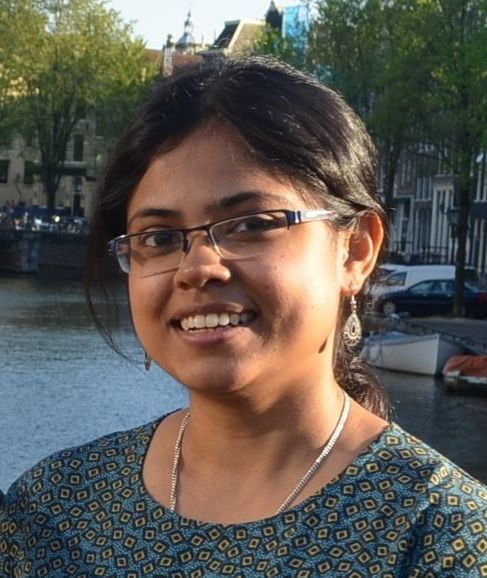|
Primary Sources
1.
“1951 Refugee Convention,” UNHCR

2.
“Implementation of the 1951 Convention and the 1967
Protocol relating to the Status of Refugees - Some Basic
QuestionsImplementation of the 1951 Convention and the 1967 Protocol
relating to the Status of Refugees - Some Basic Questions,.
EC/1992/SC.2/CRP.10.,” UNHCR, 1992.

3.
"Genocide Prevention and the Responsibility to
Protect"
.

4.
“AU Convention Governing Specific Aspects of Refugee
Problems in Africa,” ACHPR

5.
“Who Qualifies for International Protection,”
Migration and Home Affairs, European Commission.

6.
Documents on European Migration.

7.
“Note on the Integration of Refugees in the European
Union,” UNHCR, 2007

8.
“Past and present responsibility-sharing arrangements
for refugees in the Asia Pacific region,” UHHCR, 2017

Secondary Sources
9.
Bellamy, Alex J, “Supreme emergencies and the protection of
non-combatants in war,” International Affairs, 80(5), 2004,
pp. 829-850

10.
Borgia, Fiammetta, "The Responsibility to Protect
Doctrine: Between Criticisms and Inconsistencies", Journal on the
Use of Force and International Law, 2 (2), 2015, pp. 223-237

11.
Bradley, Megan, "The International Organization for Migration (IOM):
Gaining Power in the Forced Migration Regime" Refuge, 33 (1),
2017, pp. 97-106

12.
Bulley, Dan, “Inside the tent: Community and government in refugee
camps,” Security Dialogue, 45(1), pp. 63-80.

13.
Chandler, David, "The R2P is Dead, Long Live R2P: The Successful
Separation of the Military Intervention from the Responsibility to
Protect", International Peacekeeping, 22 (1), 2015, pp. 1-5

14.
Chandler, David, "The Responsibility to Protect?
Imposing the Liberal 'Peace'", International Peacekeeping, 11
(1), 2007, pp 59-81 -

15.
Cotler, Irwin and Jared Genser (eds.), The Responsibility to
Protect (New York: Oxford, 2012)
16.
Dasgupta, Geetisha and Ishita Dey, “State of Research on Forced
Migration in the East and North-East,” EPW, XLV,21,
22-28/5/2010, pp. 37-41.
17.
Evans, Tony, “International human rights law as power/knowledge,”
Human Rights Quarterly, 27(3), 2005, pp. 1046-1068

18.
Kent,
Randolph C., “International Humanitarian Crisis: Two Decades before
and Two Decades Beyond,” International Affairs, 80(5), 2004,
pp. 851-870.

19.
Loescher, Gill and John A. Scanlan, Calculated Kindness: Refugees
and America's Half-Open Door, 1945-Present (New York: Free
Press, 1998)
20.
Mirza, Mansha, “Disability and Humanitarianism in
Refugee Camps: The Case for a Traveling Supranational Disability
Praxix,” Third World Quarterly, 32(8), 2011, pp. 1527-1536

21.
Moulin, Carolina, “Border Languages: Rumors and (Dis)
Placements of (Inter) National Politics,” Alternatives,
35(4), 2010, pp. 347-371.

22.
Owens, Patricia, “Reclaiming 'Bare Life'? : Against Agamben on
Refugees,” International Relations, 23(4), pp. 567-582

23.
Panebianco, Stefania, “When Responsibility to Protect
‘Hits Home’: The Refugee Crisis and the EU Response”,
Third
World Quarterly,
39(1), 2018, pp. 1-17. 
24.
Rodriguez, Encarnacion Gutierrez, "The Coloniality of Migration and
the 'Refugee Crisis': On the Asylum-Migration Nexus, the
TransAtlantic White European Settler Colonailism, Migration and
Racial Capitalism", Refuge, 34 (1), 2018, pp. 16-28 
25.
Samaddar, Ranabir, "Power and Responsibility at the Margins: The
Case of India in the Global Refugee Regime", Refuge, 33 (1),
2017, pp. 41-51 
26.
Samaddar, Ranabir, A Post-Colonial Enquiry into Europe's Debt and
Migration Crisis (Singapore: Springer Verlag, 2016), chapter 4
27.
Shapiro, Michael J, “Go West, Go East: War’s Exilic Subjects,”
Security Dialogue, 44 (4), pp. 315-329

28.
Weisse, Thomas G. et.al, “The Responsibility to
Protect: Challenges and Opportunities in Light of the Libyan
Intervention” - 
International Migration Review
29.
Hollifield, James, “The
Emerging Migration State,” International Migration Review,
Volume 38 (2), 2004, pp 885-912 
30.
Keely, Charles B., “How
Nation-States Create and Respond to Refugee Flows,” International
Migration Review, Volume 30(4), 1996, pp 1046-1066

|


